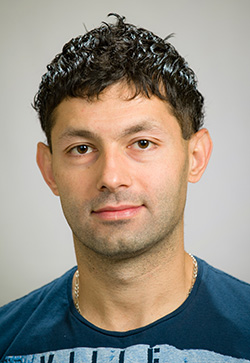
Maher Alayyoubi, PhD, a research specialist in the lab of Robert Lamb, PhD, professor in Microbiology-Immunology and at the Weinberg College of Arts and Sciences, conducted tests on parainfluenza virus 5, a prototype membrane-enveloped RNA virus, to reveal the structure of the nucleocapsid. They used x-ray crystallography and electron microscopy to solve the three dimensional atomic structure.
These results, published in a recent paper in Proceedings of the National Academy of Sciences, indicated how replication of the virus could occur with minimal changes to the structure of the virus nucleocapsid helical ribonucleoprotein.
“Determining the structure helps us understand how things work on the molecular level,” Alayyoubi, first-author of the paper, said. “The structure shows a ring nucleoprotein-RNA complex, with the RNA or genetic material hidden in a groove from the outside explaining how the virus can evade the host immune system and host proteases.”
They found the molecules in the ring can rotate specific domains to allow viral polymerase proteins to have access to the RNA genome, which makes it possible for the virus to replicate without destroying the original ring structure. Consistent with other viruses in the family, Alayyoubi found the virus follows the “rule of six,” where the number of nucleotides needs to be divisible by six for efficient viral replication.
In future studies, the scientists plan to further investigate two large proteins of the viral polymerase, and learn how they interact with the nucleocapsid ring complex of the virus.






